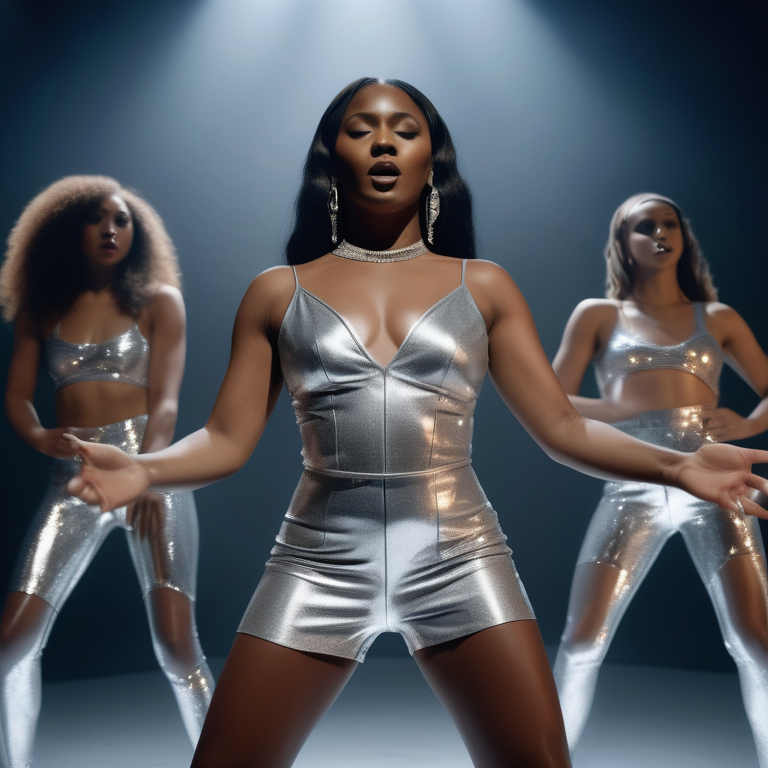Exploring Themes of Female Sexuality in Detective Fiction
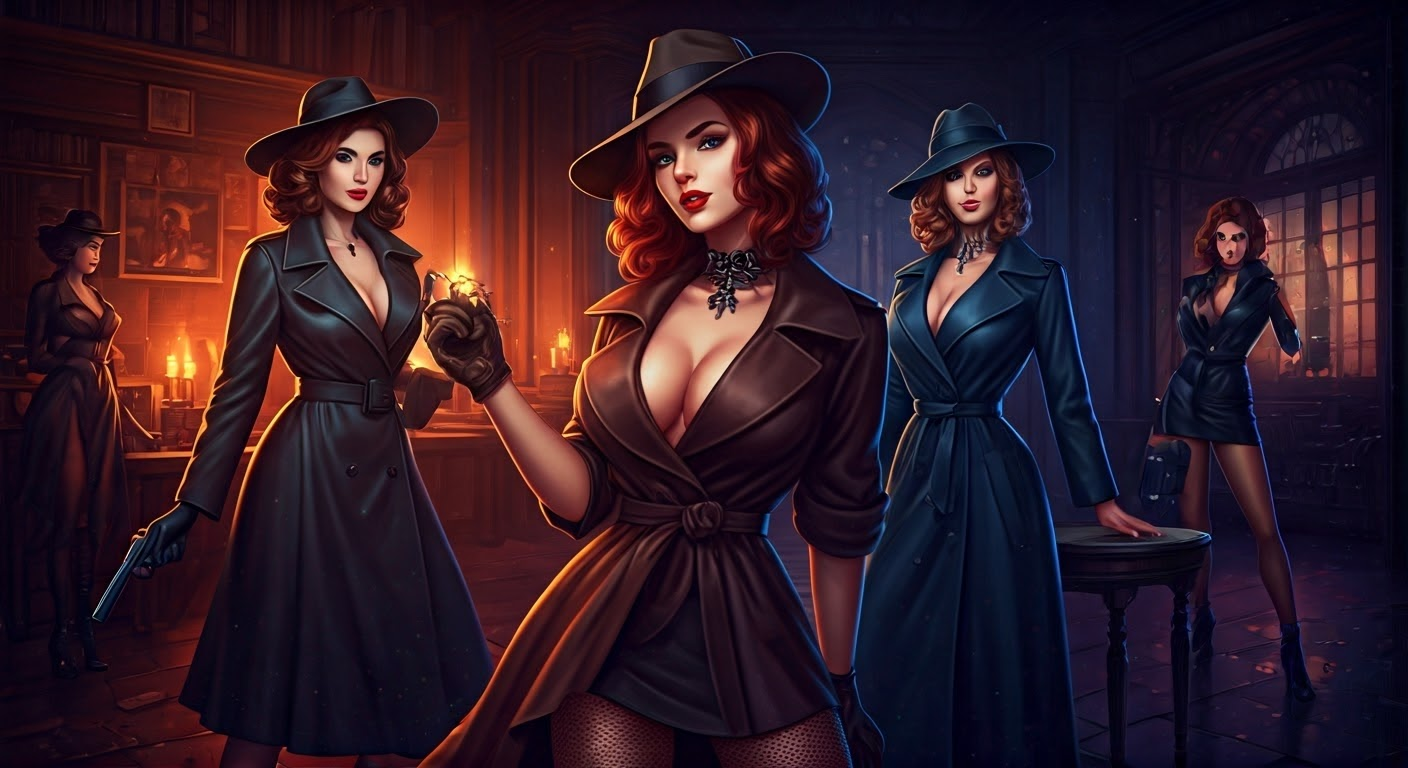
Key Highlights
- Unveiling Hidden Depths: This blog explores how detective fiction, often perceived as a masculine genre, grapples with themes of female sexuality.
- From Femme Fatale to Trailblazer: We’ll trace the evolution of female characters, from stereotypical tropes to complex figures who challenge societal norms.
- Beyond the Male Gaze: We will examine how female writers have reshaped narratives, offering fresh perspectives on gender dynamics and power relations.
- Sexuality as a Narrative Device: Discover how allure, intimacy, and empowerment drive plots, adding layers of intrigue to detective fiction.
- Reflecting Societal Attitudes: Explore how these stories reflect and critique societal views on gender roles, expectations, and the justice system.
Introduction
Detective fiction is often linked to tough detectives and dark crime scenes. It may not seem like the right place to talk about female sexuality. However, from its beginnings, how women are shown in these stories has changed with society’s views and sparked talks about gender representation. This exploration will show how detective fiction, with its mix of characters and complex stories, deals with ideas of desire, freedom, and the power between men and women.
Historical Evolution of Female Sexuality in Detective Fiction
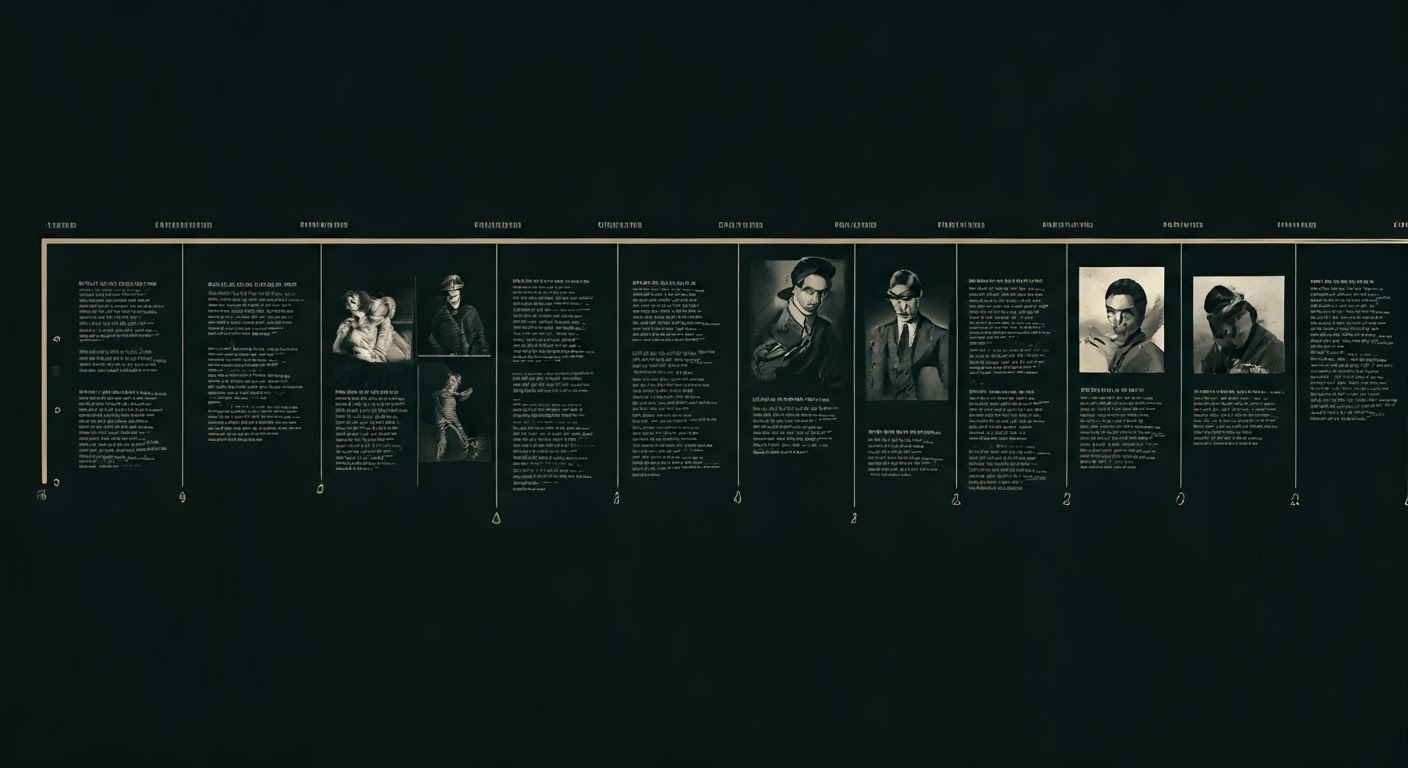
The way female sexuality is shown in detective fiction is closely tied to the history of the genre. As society changed, the roles of women in these stories changed too. Early on, women were often shown through stereotypes, limiting their characters.
But as the genre grew and more women became authors, the view of female sexuality became richer. Writers started to move beyond simple portrayals. They used detective fiction to explore and question old ideas about gender roles. This allowed them to present more complex views of women’s lives and desires.
Early representations in the 20th Century
The early 20th century brought us famous detectives like Sherlock Holmes. His stories were exciting but usually pushed women to the side. Characters like Miss Marple came into play, but people often saw her innocence and traditional femininity instead of her smart detective work.
The stereotype of the innocent girl needing saving was common. Women in these stories often ended up as victims or love interests. Their sexuality was either ignored or only shown in how it related to men.
This view, while it showed the beliefs of that time, limited the roles women could have in early detective fiction.
The transition during the feminist movements
With the rise of feminism, detective novels started to show changing views on women’s roles. Writers like Agatha Christie, an important name in the Golden Age of detective fiction, created female detectives who broke stereotypes.
Miss Marple, created by Christie, seemed harmless but used her sharp mind and understanding of people to solve tough cases. This unexpected twist helped open the door for stronger female characters in these stories.
As these characters grew, society was also changing. Women gained more independence and fought against traditional roles. Their fictional versions began to reflect these changes, adding new depth to detective tales.
Modern perspectives and interpretations
Contemporary crime fiction has seen a rise in strong stories written by female writers. These authors look at female sexuality with care, bringing new ideas that earlier works often missed. They push past old limits of the genre.
Female characters are no longer stuck in simple roles. They now lead investigations, form complicated relationships, and take charge of their desires. The male view, which was once common, is often challenged. We now see more complex pictures formed from real-life experiences.
This change in how we see gender is a big step for detective fiction. By welcoming layered female characters and their views, today’s writers are changing the genre and attracting a fresh group of readers.
The Role of Female Characters in Classic Detective Stories
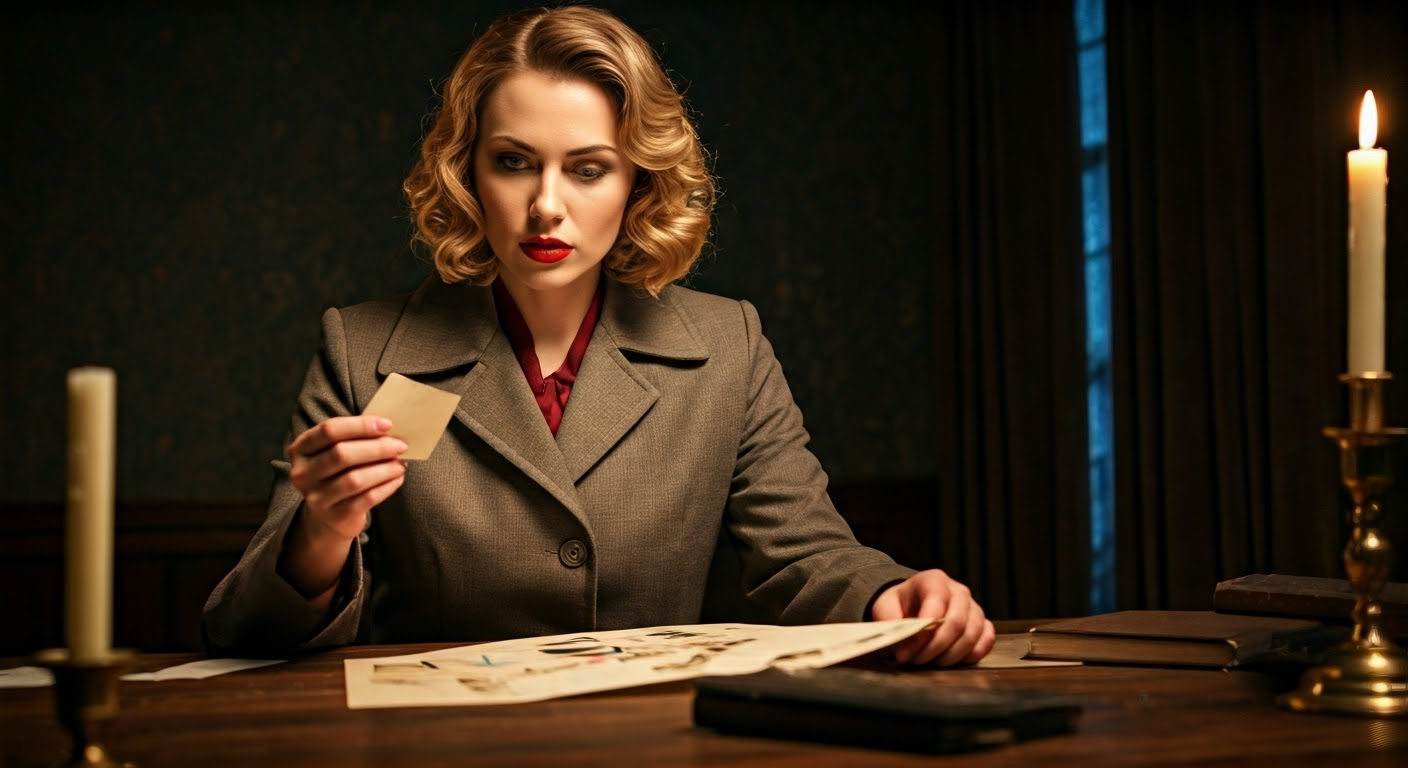
Classic detective stories often had female characters who were important to the story. However, their roles were often tied to the men in the plot. Some of these women fit the typical roles expected in society. Others broke away from these norms and made a significant impact on the genre.
From smart and dangerous femme fatales to clever but overlooked spinster detectives, female characters made classic detective stories richer and more interesting. They helped change the genre and opened doors for more diverse characters in the future.
The femme fatale and her impact on narratives
The femme fatale is a mysterious and seductive character often seen in detective fiction. She represents both desire and danger. Usually, she is a mix of a temptress and a clever planner. The femme fatale uses her charm to control men and achieve her own goals. This changes the usual flow of detective stories.
Her character brings surprise and uncertainty. The detective feels attracted to her, but he is also cautious of her charm. This struggle, which can turn into obsession, is key to moving the story along. It adds depth and psychological interest to the case.
Though some criticize the femme fatale for reinforcing negative stereotypes, she also shows a type of woman who breaks norms and claims her power in a world dominated by men.
Female detectives: Breaking the glass ceiling
The rise of women detectives changed the game in detective fiction. These characters showed that solving crimes was not just a man’s job. They used their smart thinking and skills to prove they could investigate well.
Often, their male peers underestimated them. They faced doubt from society but found their way, showing they could solve crimes and handle the tough world of detection. Their success pushed against traditional gender roles and pointed out how silly it was to limit women’s chances based on what society thinks.
From novice crime solvers to expert private detectives, these women inspired readers. They showed that intelligence, bravery, and hard work go beyond gender stereotypes.
Victims, Villains, and Heroines: A spectrum of complexity
Detective fiction moved away from old stereotypes and started showing women as complex characters. They were not just victims anymore; they had their own stories and choices, and their lives were represented with care.
Villains were also shown differently. Instead of being just greedy or seeking revenge, they had deeper reasons for their actions, often linked to social problems or personal struggles. This depth was true for heroines too, with their weaknesses making them relatable, and their victories much more rewarding.
By showing the full range of human experience, detective fiction improved its storytelling. It highlighted the different kinds of female characters and their ability to be both very good and quite dark.
Gender Dynamics and Power Relations
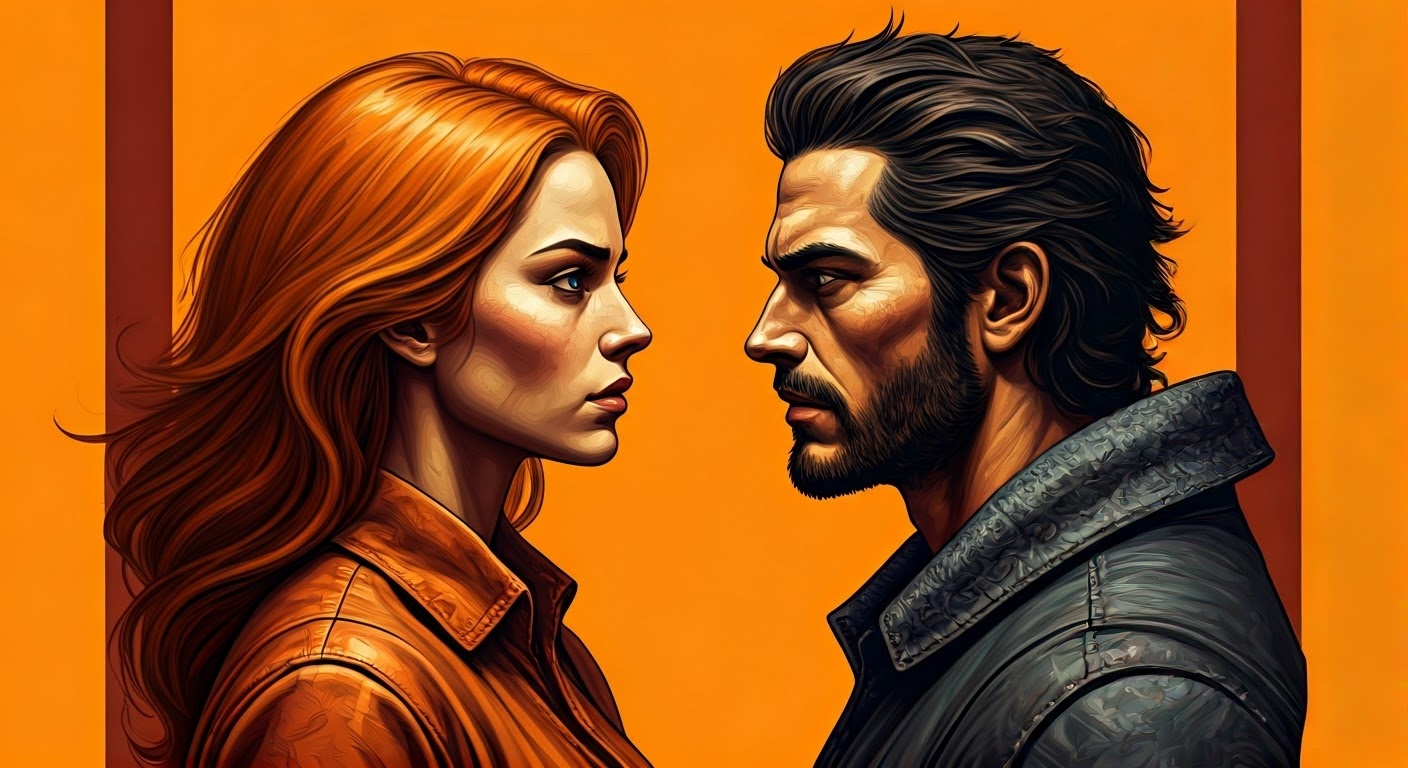
Detective fiction often looks closely at crime and justice. It acts like a magnifying glass to explore how power changes between men and women. The interactions between male and female characters, both in police work and in everyday life, show how complex society can be as gender roles change.
As women in these stories start to take charge and ask for equal rights, the genre allows us to examine these changes in power. This makes readers think about their own beliefs and face the real issues of gender inequality.
Male gaze vs. female perspective in storytelling
The male gaze is an old way of telling stories. It often shows women as objects or based on how others see them. But when more female writers joined, detective fiction started to change. It began to include women’s views, giving a fresh take on these usual ideas.
These writers focused less on how others see women and more on their thoughts and feelings. They looked at issues like desire, vulnerability, and ambition from a female angle. This change gave readers a deeper and more real look at women in detective stories.
By moving away from the male gaze and welcoming many female voices, detective fiction changed and grew. It also helped start bigger talks about how important it is to tell stories that include everyone.
Sexual autonomy and control in plot development
Empowerment is a key idea in many feminist stories. It also appeared in detective fiction by looking at women’s control over their own bodies. Female characters in these stories accepted their sexuality. They did not let society decide who they were. This made them strong characters in the plots.
Exploring sexual freedom helped to shape the story. Characters faced challenges in their relationships and addressed unfair rules. They used their choices to twist the storyline in surprising ways.
By highlighting women who were confident about their desires and managed their own lives, detective fiction changed the usual power roles. It encouraged readers to think about their own views.
The evolution of male characters in response to strong female roles
The rise of strong female characters in detective fiction changed how male detectives were shown. Facing capable and independent women, these male characters had to rethink their old beliefs and adjust to new times.
Some male detectives accepted this change. They became deeper characters who respected their female partners and valued their ideas. However, others held on to old views and struggled. Their authority weakened because they did not see women as equals.
This situation created tension and self-reflection. It allowed for interesting character development and added meaningful social messages to detective stories.
Female Sexuality as a Tool for Mystery and Intrigue
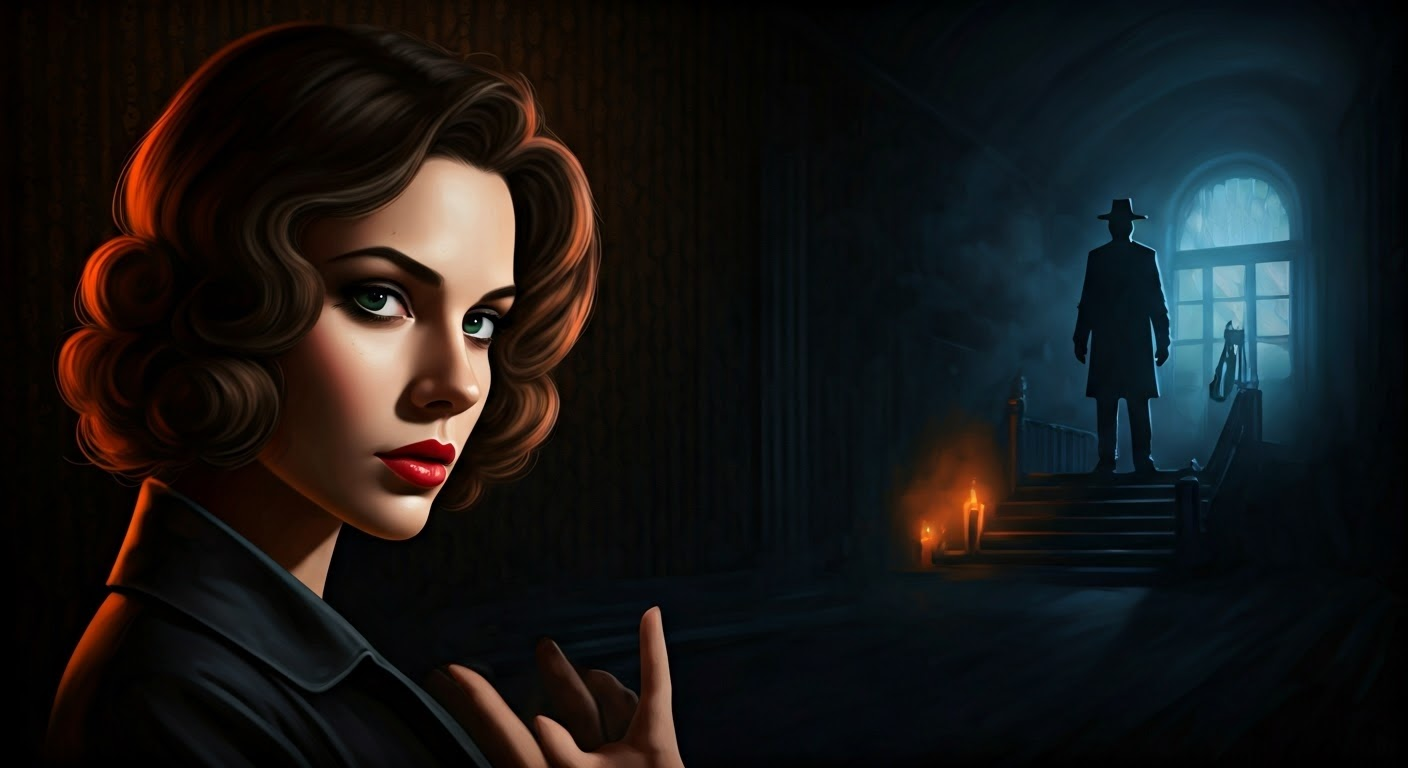
Historically, women’s sexuality has always had an air of mystery. Detective fiction took advantage of this link. Writers used a character’s charm to solve a case or explored deeper feelings among secrets. They skillfully wove sexuality into their stories.
This use of sexuality served many purposes. It could motivate crime, distract, or empower characters. This added depth to the stories and kept readers engaged. It made them question what was attraction and what was suspect.
Using allure and intimacy to drive the plot
Allure and intimacy are strong tools for skilled writers in detective fiction. A character’s charm or a secret affair can help solve a tricky mystery. This adds excitement and danger to the story.
Sometimes, intimacy can make characters vulnerable. They might share important details or make risky choices that move the plot along. The results of these choices often happen amid feelings of desire and betrayal, keeping readers hooked.
By mixing allure, intimacy, and suspense, writers of detective fiction created stories that delight readers. They challenged readers to explore the tricky connections between people in the world of crime and deceit.
The double-edged sword of sexual empowerment
Sexual empowerment helped female characters break free from strict social rules, but this often came with challenges. Detective fiction looked closely at this issue. It showed both the successes and dangers of accepting one’s sexuality.
Characters who used their sexuality to get ahead or control others often faced backlash. This raises questions about whether empowerment can be achieved without social judgment or personal fallout. Detective fiction gives us a deeper understanding of sexual freedom. It shows that true empowerment means dealing with social expectations, personal choices, and power struggles.
By examining the many sides of sexual empowerment, detective fiction created space for deeper talks about freedom, responsibility, and the fight for equality.
Challenges in portraying nuanced sexual identities
As detective fiction grew, authors started to explore different sexual identities. However, showing these experiences truthfully and respectfully had its own set of difficulties. It needed care and a willingness to confront stereotypes.
Early efforts often missed the mark. They stuck to old ideas or put LGBTQ+ characters in narrow storylines. But today, the genre is moving toward being more inclusive. Modern writers are telling engaging tales focused on characters from different backgrounds. They also look at how identity interacts with other factors.
By facing these issues directly and ensuring real representation, detective fiction can help improve understanding. It can also break harmful stereotypes and celebrate the wide range of human experiences found in its stories.
Societal Reflections and Critiques through Detective Fiction
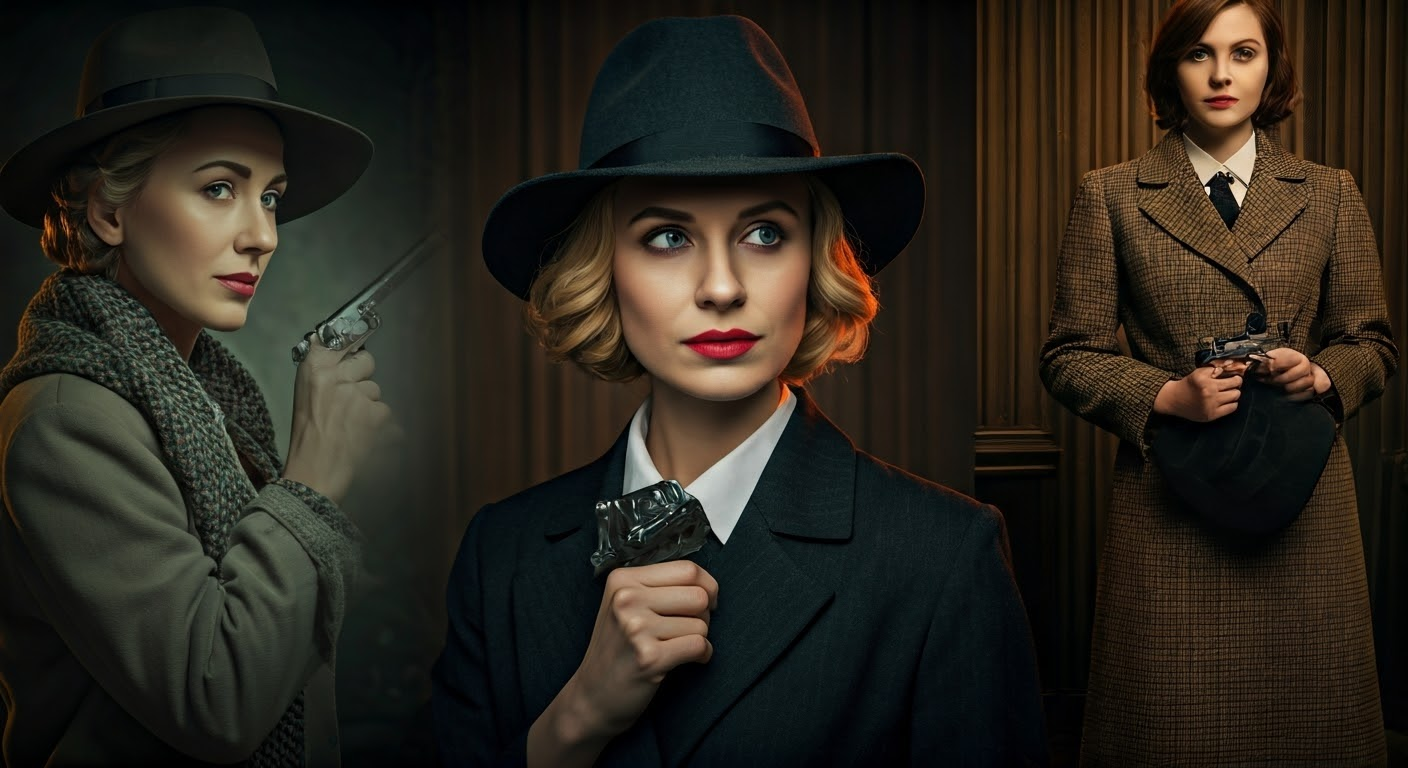
Detective fiction often shows us what is happening in society. It reflects our worries, biases, and changing values. The way women and their sexuality are shown in these stories helps us look at how people think and start important talks.
It explores topics like the role of women in police work and the unfair standards they deal with in their personal lives. Detective fiction dives into these issues, giving us both clear and hidden messages about social norms and the fight for equality.
Commentary on gender norms and expectations
Detective fiction looks closely at how people act and interact in society. It provides an opportunity to talk about gender roles and expectations. The stories show how society limits women and what happens when they follow strict gender roles.
Female detectives face many challenges. They deal with pressure to fit into certain stereotypes. There are also double standards when it comes to sexuality. These themes for exploration appear in the stories. They may help readers question their beliefs about society.
By telling interesting stories with strong characters, detective fiction can spark important discussions. It wants to challenge old ideas and help create a fairer future.
Sexual politics and the justice system
The mix of sexual politics and the justice system is a rich area to explore in detective fiction. These stories often reveal how biases in investigations and the silencing of victims show how power and societal views can affect justice.
How women are treated in the criminal justice system, whether as victims, suspects, or workers, brings to light tough facts about gender differences and the challenges women face. Detective fiction highlights these unfairnesses and encourages readers to think about these systems and push for better accountability.
These stories make us look at crime and punishment and challenge us to face deep-seated biases. They push us to support fairness and to imagine a justice system that protects the rights of everyone, no matter their gender.
Reimagining societal views on female desire
Detective fiction shows female desire in many ways. It goes against narrow views in society and shares new stories that honor women’s choices. These tales focus on women who own their sexuality. They ignore what society expects and change how we see women taking control of their wishes.
Through these characters, readers learn about different views on relationships, self-discovery, and intimacy. This breaks the idea that there is only one way for women to experience life. Detective fiction creates a place to look at female desire, inviting readers to think about their own beliefs and understand sexuality in a more inclusive way.
By talking openly about female desire, these stories help society accept women as complete people with rich inner lives.
Comparative Analysis of Female Sexuality in British vs. American Detective Fiction
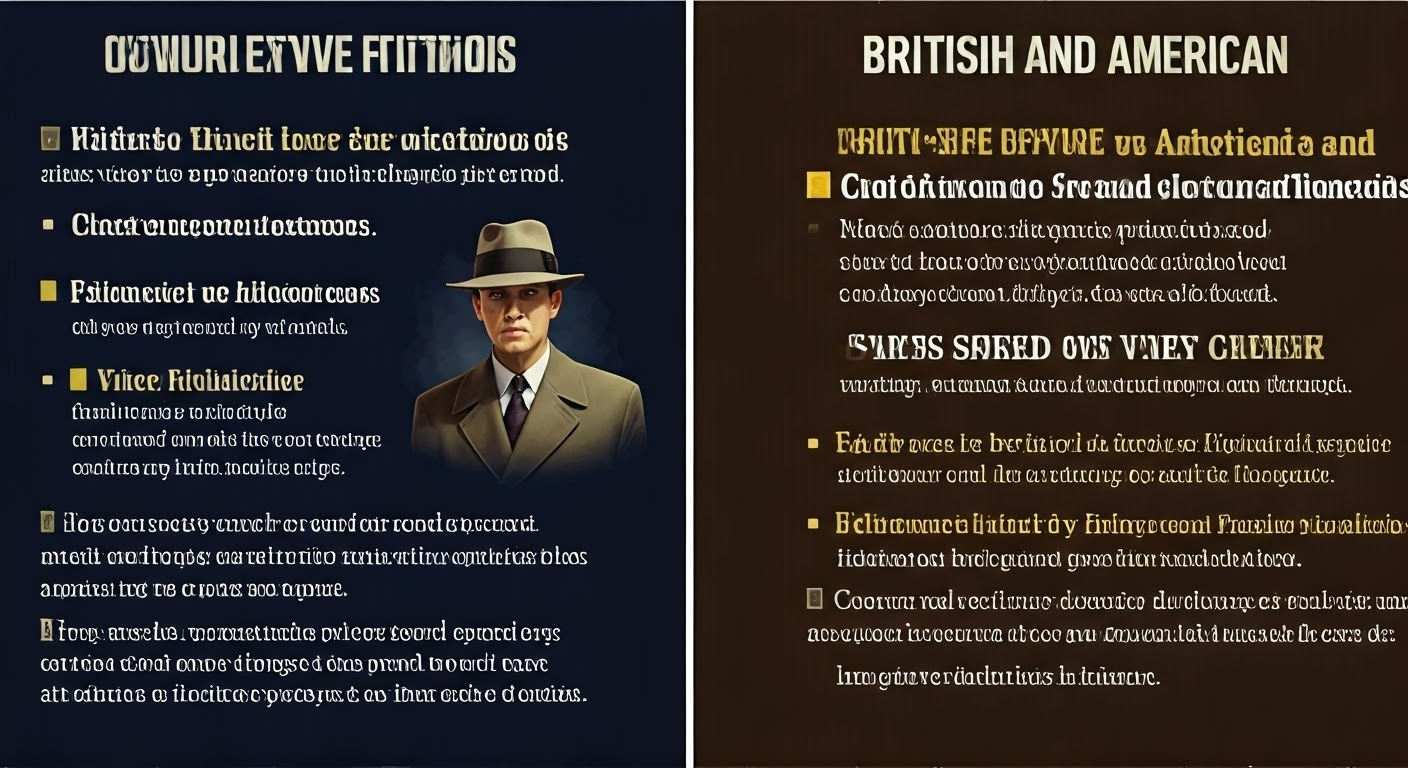
British and American detective fiction share similarities, but they show different views on female sexuality. Cultural differences and social expectations shape how characters are developed, how stories unfold, and the themes of desire, breaking rules, and empowerment.
While British mysteries often have a calm and elegant style, American hard-boiled stories tend to show a rough and real approach. These varied styles provide an interesting look at how different cultures deal with changing views about women and their roles in society.
Cultural influences on character development and plot lines
Cultural influences are important in shaping both character development and plot in detective fiction.
British mysteries often focus on social rules and class differences. They usually include female characters whose lives connect with tradition and what society expects.
In contrast, American hard-boiled stories show a tough reality and look at urban issues. Here, women often face dangerous situations where surviving is more important than following social norms.
These cultural differences affect the characters’ motivations, their relationships, and the choices they make. This influences how the whole story develops.
By looking at how culture shows up in detective fiction, we can better understand the social worries, power dynamics, and changing views on women that shape these interesting stories.
The portrayal of taboo subjects in different societies
Detective fiction often uncovers hidden truths. It explores sensitive topics that show the worries and changing values of society. The way these topics are shown can vary based on culture and what a society thinks is acceptable or controversial.
For instance, in British detective fiction, themes like infidelity or unusual relationships might be presented more subtly. Here, social standards and reputation matter a lot. On the other hand, American hard-boiled stories usually deal with these subjects more directly. They reflect a society facing issues like violence, corruption, and unclear morals.
Looking at these sensitive topics in detective fiction gives us insight into different cultures. It shows the variety of viewpoints and how social norms are changing.
Impact of censorship and societal norms on storytelling
The development of detective fiction is closely tied to censorship and social norms. What could be talked about openly in one time might be seen as too sensitive or wrong in another time. This change affects how authors write about topics like sex, violence, and social issues.
Sometimes, rules held writers back. They had to be creative to express their ideas. They used symbols, hidden meanings, and smart language to get their points across without upsetting people. This game of testing limits while following social rules helped create the genre’s special voice. It also reflected how people’s views on tough topics changed over time.
By knowing the challenges writers faced in different times, we can better understand how detective fiction has grown. It shows how this genre can still engage, question, and inspire readers.
Influential Female Authors in Detective Fiction
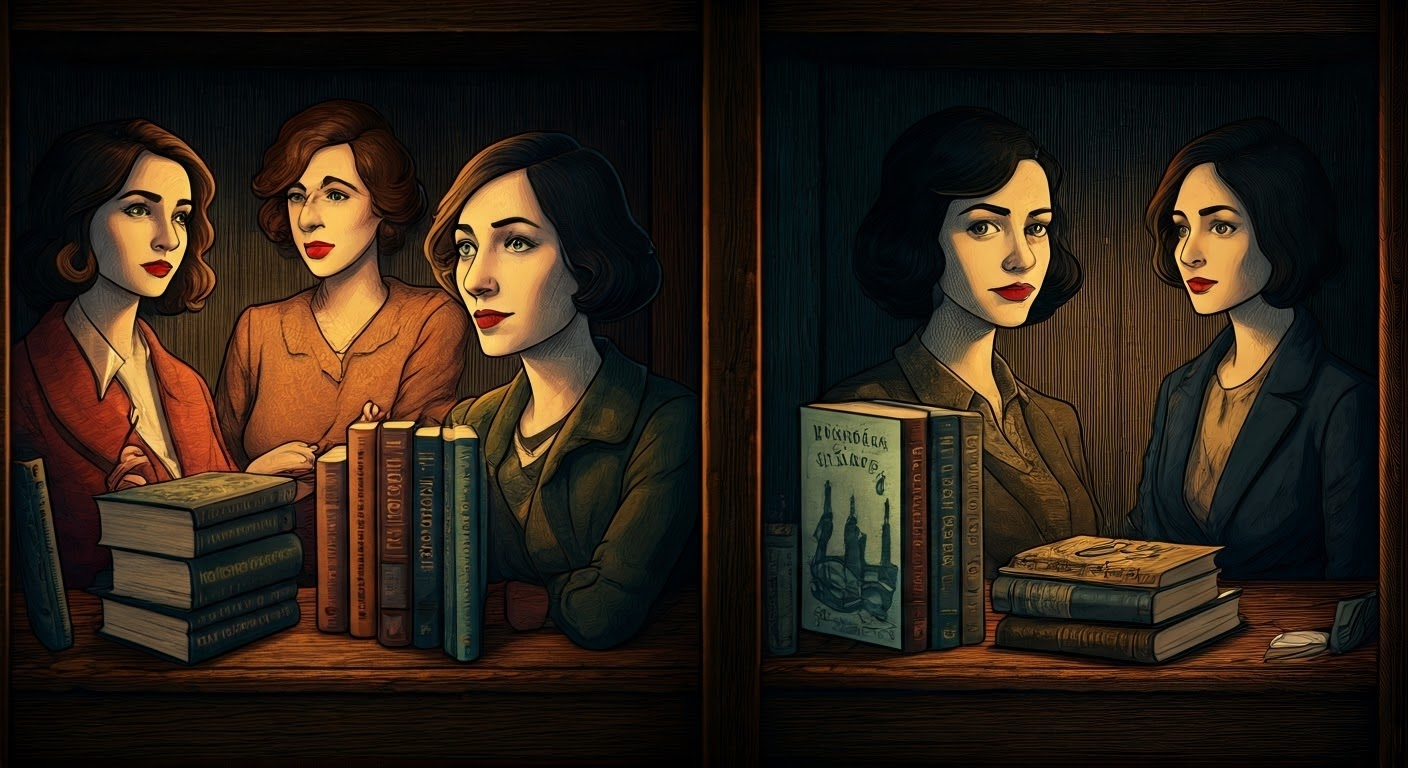
The world of detective fiction would not be the same without the many important female authors who helped shape it. From early writers who broke norms to modern voices challenging the status quo, these women have added their special touch to detective stories. They explore the many layers of human life with strong passion.
Their strong characters, complex plots, and meaningful comments on society have attracted readers everywhere. These authors have proven they are great at creating suspense, mystery, and stories that make you think.
Pioneers who shaped the genre
The world of detective fiction is greatly influenced by female writers who broke the rules and created a path for others. Authors like Agatha Christie, known for her famous detectives Miss Marple and Hercule Poirot, captured the attention of readers. They did this with clever puzzles, interesting characters, and a deep understanding of people.
Dorothy L. Sayers was another key figure in this time, pushing the limits of the genre. She looked at social issues and gave her characters a mix of humor, smarts, and strong morals. These women, along with many others, showed that women could thrive in a field that many saw as mostly for men.
Their impact goes beyond exciting stories. They changed what detective fiction could be, allowing for more diversity and a better look at the human experience in these thrilling tales.
Contemporary authors pushing boundaries
Contemporary female authors are changing detective fiction. They push boundaries and redefine the genre with their creative stories and brave exploration of complex topics.
Val McDermid is one such author. She is known for her gritty crime novels and for her series that features profiler Dr. Tony Hill. Her writing shows the dark side of human nature and keeps readers hooked.
Another great author is Tana French. She is a master of psychological suspense. French goes into the minds of her characters, looking at themes like identity, memory, and the thin line between truth and perception.
These authors, along with many others, keep readers engaged. They face social issues head-on, challenge stereotypes, and show what detective fiction can do.
With their unique voices and commitment to great writing, they make sure this genre stays fresh, relevant, and important in today’s literature.
The role of autobiographical elements in shaping narratives
Autobiographical elements often appear in stories by women detectives. These personal stories can add real emotions and honesty to their writing. Whether these experiences are part of the plot or shape characters, they make the reading experience more meaningful.
Some female authors use their challenges or successes to give their characters relatable qualities. This makes the characters feel vulnerable, strong, or determined. It helps readers connect with them on a deeper level. By sharing personal truths, these writers create stories that are both unique and familiar, reflecting shared human experiences.
When autobiographical elements are added to detective fiction, they offer a better look into identity, relationships, and what society expects. This variety adds rich voices to the genre. It makes sure that the stories are timely and connect powerfully to the world we live in.
The Femme Fatale: An Evolving Archetype
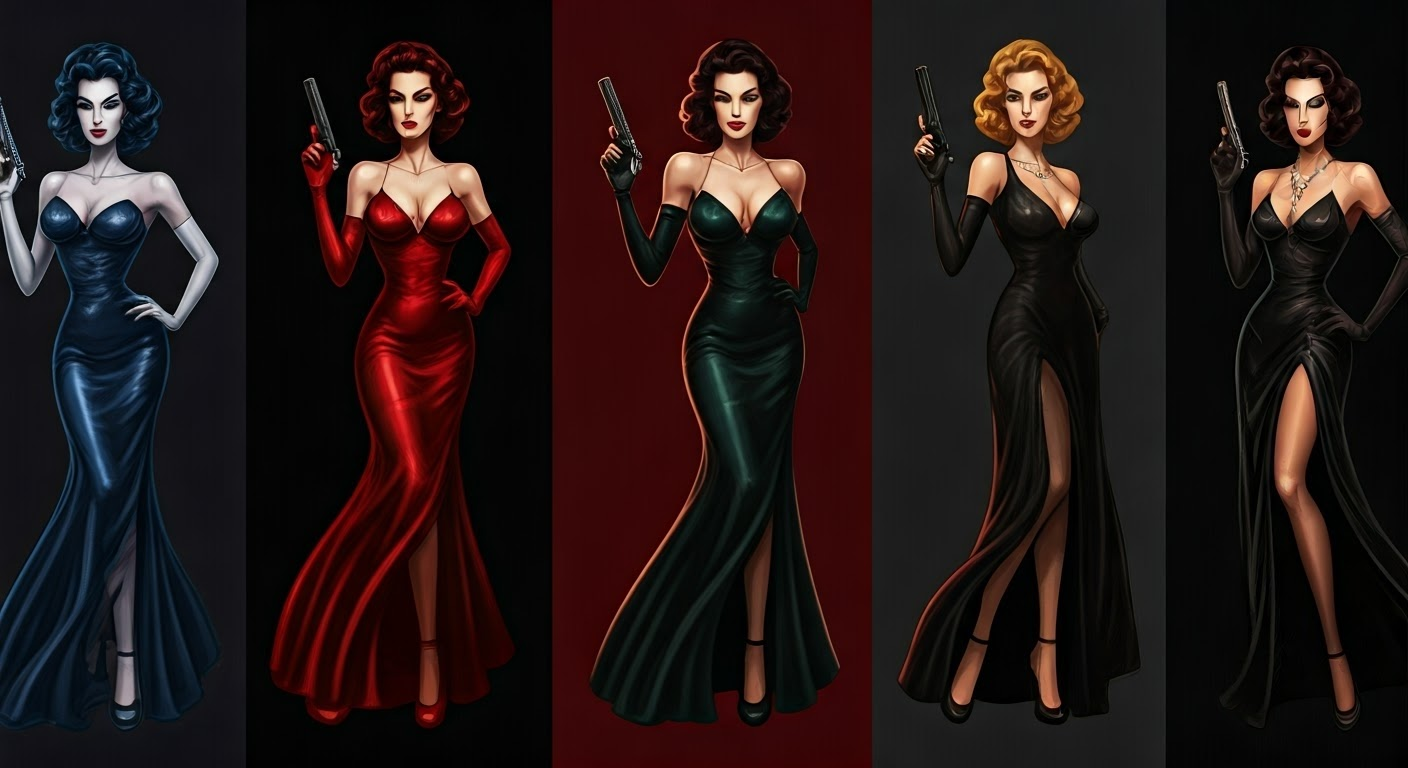
The femme fatale is a character full of mystery and danger. She has been a popular figure in detective fiction since it began. Often, she is seductive and manipulative, breaking the rules of society. This adds a complex and thrilling touch to the usual detective story.
Over time, the femme fatale has changed. Her character now reflects how society views women, sexuality, and female power. She is no longer seen as just one type of person. Instead, the femme fatale is a deeper and more relatable character. Her actions are driven by many reasons, which makes her story more complex and interesting in detective fiction.
Origins and historical significance
The femme fatale character comes from old myths and stories. In these tales, dangerous and charming women often led powerful men to their downfall. In detective fiction, the femme fatale appeared because society was worried about women’s sexuality. People became fascinated with women who broke traditional roles.
In the early 20th century, women started to take on new roles. People were anxious about female freedom, so the femme fatale became a strong symbol of charm and danger. Her presence in detective fiction showed a fear of women’s power. It also highlighted the risks of women showing their sexuality outside of marriage and social norms.
As time went on, the role of the femme fatale changed with new cultural views. While she is still seen as charming and dangerous, she is now often more complex. She can even be sympathetic, as her feelings and reasons are explored in more detail.
Modern reinterpretations and criticisms
Modern views of the femme fatale in detective fiction aim to go beyond old limits. They offer richer and more detailed images of women that question traditional ideas about female power and bad behavior. These new portrayals often look at how women’s wishes, goals, and struggles in a male-dominated world are more complicated than they seem.
Though the femme fatale is still an interesting and lasting character, this role has rightfully faced criticism. Some say it reinforces negative stereotypes. These stereotypes suggest that women are deceitful, dangerous, and deserve punishment for being sexual. Critics point out that focusing just on seduction leaves out the rich complexity of female characters. It also supports a narrow view of women, seeing them as either innocent victims or cunning seducers.
Knowing these criticisms, modern writers are working to challenge and change the old femme fatale idea. They create richer and stronger portrayals of female characters who do not fit into simple categories.
The femme fatale’s role in feminist discourse
The femme fatale is a complex character in feminist discussions. Some people see her as a negative figure that shows men’s fears about women’s sexuality. However, others believe she can be a form of early feminist resistance because she breaks social rules and stands against norms.
Her choice not to fit in, owning her sexuality, and pushing back against traditional power can be seen as a challenge to the usual way of things. Even though she often faces punishment for her actions, she disrupts the normal order. This makes people confront the unfair double standards that women encounter.
Feminist scholars keep discussing what the femme fatale means in detective fiction. They see both the weaknesses of this character type and its ability to start important talks about female power, sexuality, and the tricky dynamics between genders.
Reader Reception and Interpretation
Reader opinions and understanding are very important in the ongoing talk about female sexuality in detective fiction. How people see female characters and their actions can lead to discussions about how these stories reflect male views. This can help us think more deeply about how the genre is changing.
Readers influence detective fiction by calling for better and more complex portrayals of women. They want characters that go beyond old stereotypes and show a wider range of women’s desires and experiences, which affects how the genre grows.
How audiences perceive female sexuality in detective stories
Audience views on female sexuality in detective stories have changed a lot over time. This change reflects larger shifts in society and a push for more diverse representation. What used to be seen as shocking or inappropriate in the past is now more accepted. Readers want realistic and varied portrayals of female characters.
Today’s audiences are more likely to question the way women are shown. They do not want outdated stereotypes or simple character traits. Instead, they enjoy characters who break norms, take control of their lives, and face the challenges of relationships and society in genuine ways.
This change in how audiences think shows the need for different voices and stories. It also highlights the deep and varied experiences of women. As detective fiction keeps evolving, it’s important for writers to understand these new views. They need to create stories that connect with readers who want realness, inclusivity, and a better understanding of human experiences.
The impact of fan fiction and social media on character development
The growth of fan fiction and social media has greatly changed how characters are developed in detective fiction. They give readers a way to interact with and reimagine their favorite stories. Fans can create new plotlines, explore character relationships more deeply, and challenge the power dynamics in the original works.
Social media, in particular, has built lively online communities. Here, fans talk, debate, and critique how gender, sexuality, and power are shown in detective fiction. These discussions can impact how writers think about character development in future stories. They may be inspired to look at different angles and portray characters in richer ways.
By allowing fans to take part in shaping the stories they love, fan fiction and social media have enabled readers to influence storytelling. They have made it possible for a more lively and interactive relationship between writers and their audience.
Academic perspectives and analyses
Academic studies have been important in looking at how female sexuality has changed in detective fiction. They give us helpful information about the genre and show how it reflects society’s views. Experts from different fields, like literature, gender studies, and sociology, have looked at themes like how women are shown, the power dynamics involved, and the culture that shapes these stories.
These studies often focus on how female characters are depicted. They examine the roles these characters play and how their sexuality is shown as either powerful or vulnerable. This deep analysis helps readers understand the genre’s strengths and weaknesses, encouraging them to think more deeply about detective fiction.
By giving background information, pointing out common themes, and sharing new ideas, these academic insights add to the discussion about female sexuality in detective fiction. They create new thoughts and keep the portrayal of women in the genre fresh and relevant.
The Future of Female Sexuality in Detective Fiction
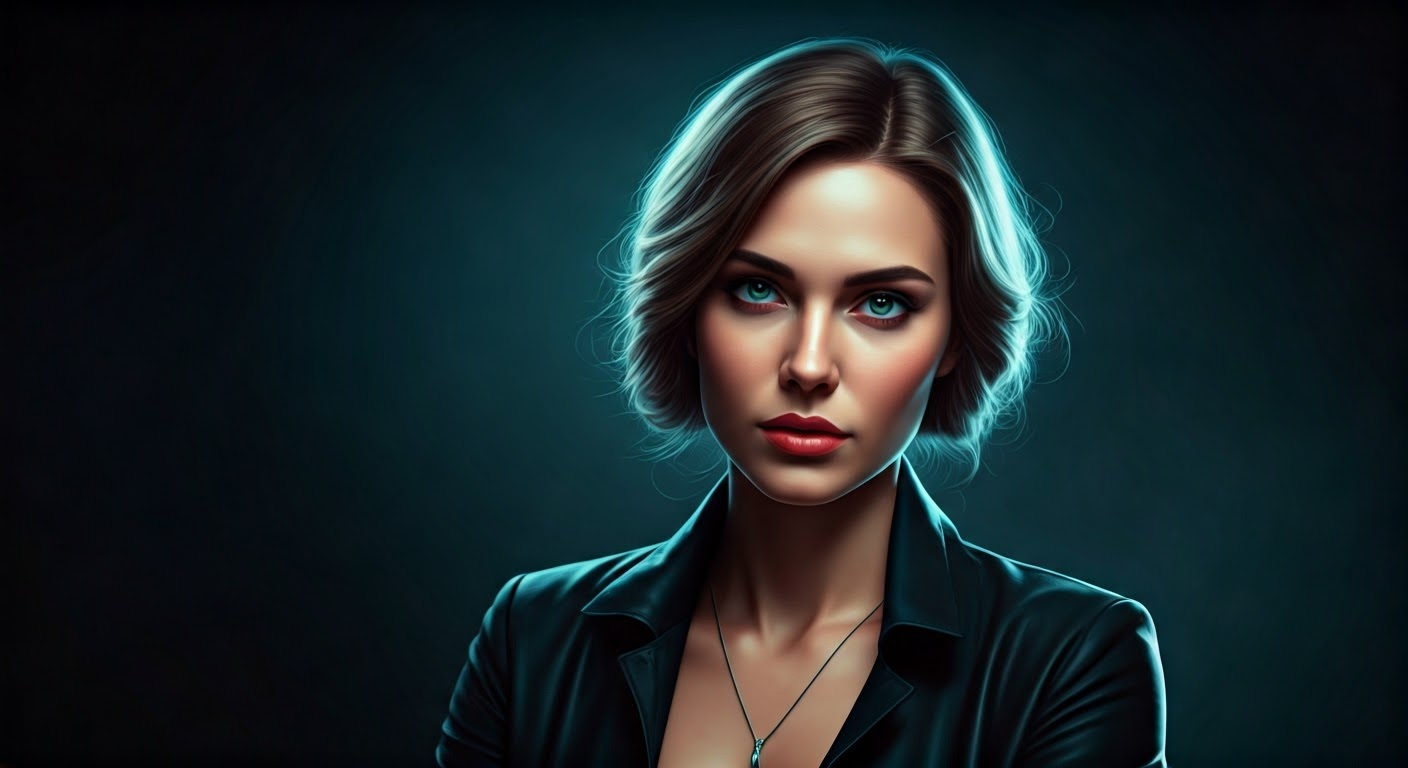
The future of female sexuality in detective fiction is full of promise. As society changes, the stories will also change. They will tackle themes of desire, choice, and power in new ways. This will give us new views on our complex lives.
Detective fiction will welcome many voices and look at how different identities intersect. It will break genre rules and try out new tools. These changes will grab the attention of audiences with stories that mirror our evolving world. They will also push us to think about our own beliefs.
Emerging trends and themes
Several new trends and ideas are shaping how female sexuality is shown in detective fiction. A major change is a focus on including more voices in the genre. Many authors from different backgrounds are sharing their views and questioning the usual power dynamics in their stories.
Another important theme is examining intersectionality. This means looking at how race, class, sexual orientation, and gender identity affect a character’s feelings, relationships, and social lives. This approach brings more depth to female characters. It moves past simple portrayals and shows the variety of human experiences.
Detective fiction is also starting to tackle modern social issues. Writers are discussing topics like consent, sexual assault, and inequality in their thrilling stories. By facing these tough topics directly, authors use their work to create awareness, start vital conversations, and help build a fairer world.
The potential for virtual reality and interactive narratives
As technology grows, virtual reality (VR) and interactive stories can change detective fiction in big ways. Picture being a detective in a virtual world with clues, suspects, and risky situations all around you. With VR, you can see the story from a character’s point of view. You get to make choices that can change what happens in the story, making the experience feel real and exciting.
Interactive stories can be found in choose-your-own-adventure books, video games, or live performances. They let readers play an active role in telling the story. This kind of engagement can change how people enjoy detective fiction. It brings the reader closer to the character and allows a deeper look into themes like sexuality, morality, and justice.
As these technologies advance, writers of detective fiction will have new chances. They can create deep and thought-provoking stories that push past regular storytelling limits. This can captivate and connect with a new audience of readers.
Ensuring diversity and inclusivity in new works
Detective fiction is changing, and it is important to include different voices to keep it relevant. This means we must show real-life diversity in race, ethnicity, sexual orientation, gender identity, ability, and different socioeconomic backgrounds, both in the stories and among the writers.
To be truly inclusive, we need to go beyond surface-level representation. We should focus on stories that highlight the lives and challenges of marginalized groups. We must listen to and uplift voices that are often left out, allowing writers from these communities to tell their stories.
By making diversity and inclusivity key ideas, detective fiction can break down stereotypes and harmful tropes. It can help readers understand and feel for others. With real representation and strong storytelling, this genre can inspire social change and celebrate the beauty of everyone’s experiences. It could also help create a fairer and more just world, both in its tales and in real life.
Conclusion
In detective fiction, the way we view female sexuality has changed over time. This change shows how society thinks and challenges traditional gender roles. Early stories often showed women as dangerous seductresses, while modern tales have female characters who are strong detectives. Readers find these stories engaging because they reveal power struggles and social issues. Female writers have been important in this genre. They have pushed limits and created true-to-life stories. Looking ahead, we can expect new trends like virtual reality experiences. There will also be a greater focus on diversity and inclusion. The future of female sexuality in detective fiction has a lot of exciting opportunities for storytelling that can capture the attention of audiences everywhere. Share your thoughts on social media and join the discussion about this interesting genre.
Frequently Asked Questions
How has the portrayal of female detectives evolved over time?
The way female detectives are shown in stories has changed a lot. In the early detective novels, like those by Agatha Christie, women detectives were often limited by what society expected of them. Now, we see strong and independent women in these roles. They challenge old ideas and lead investigations with their smarts and strength.
Can detective fiction contribute to feminist discourse?
Detective fiction, especially stories by female writers, is very important for feminist discussions. These works challenge traditional gender roles. They also look at how power works between people. Moreover, they give a voice to many different female experiences that are often missing in other types of stories.
What challenges do authors face when writing about female sexuality?
Authors have a tough job. They need to show female sexuality in a way that is real and respectful. They should steer clear of harmful stereotypes and exploitation.
Who are some must-read female authors in the detective fiction genre?
Some female authors you should read in detective fiction are Agatha Christie, P.D. James, and Sue Grafton. They tell amazing stories. They also create strong female characters. These authors have made a big difference in the genre.
How do cultural differences impact the representation of female characters?
Cultural differences play a big role in how female characters are shown in detective fiction. These differences affect their personalities, actions, and roles in society. By understanding these cultural details, we can see more depth and complexity in character development and storytelling.

